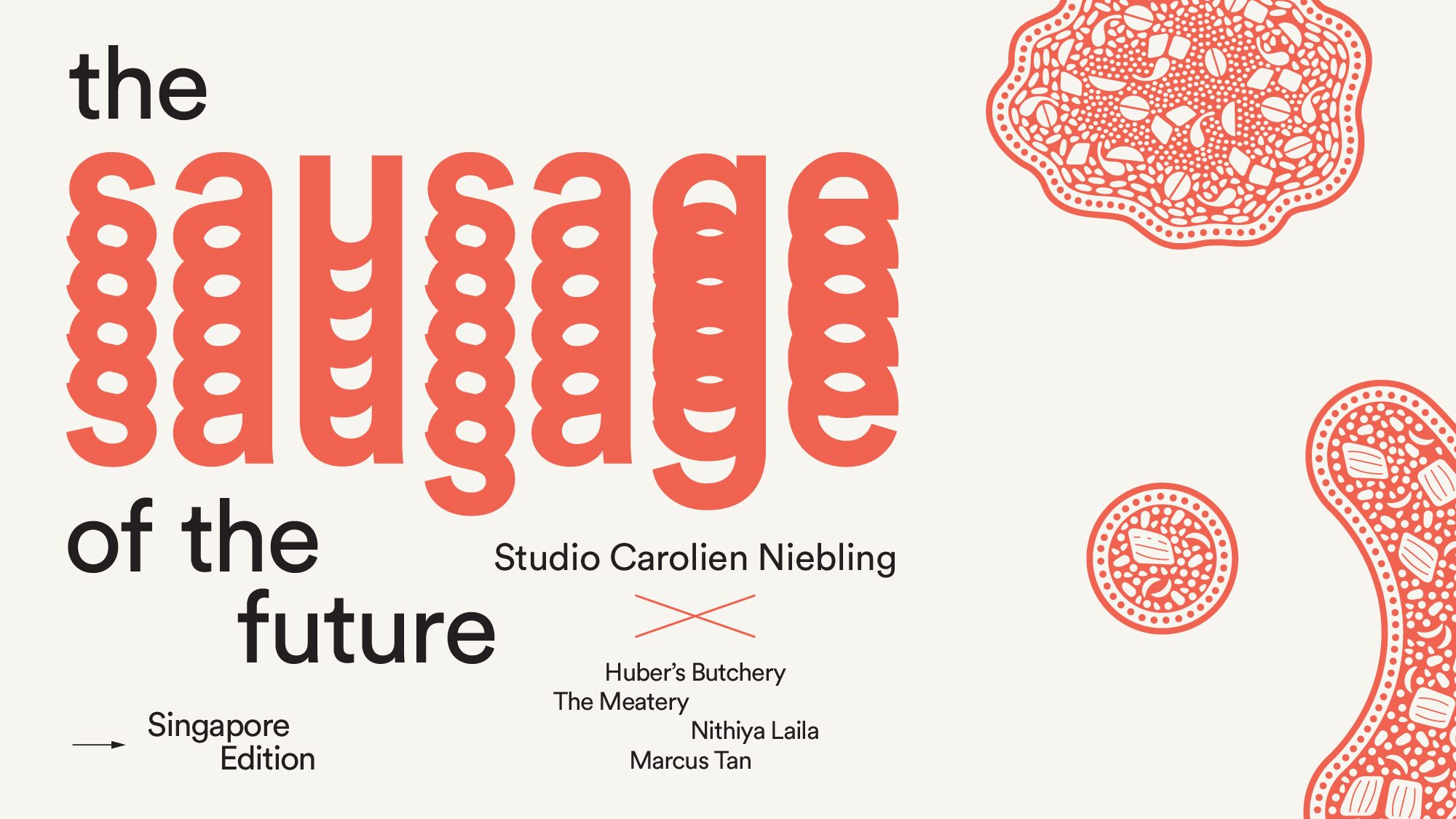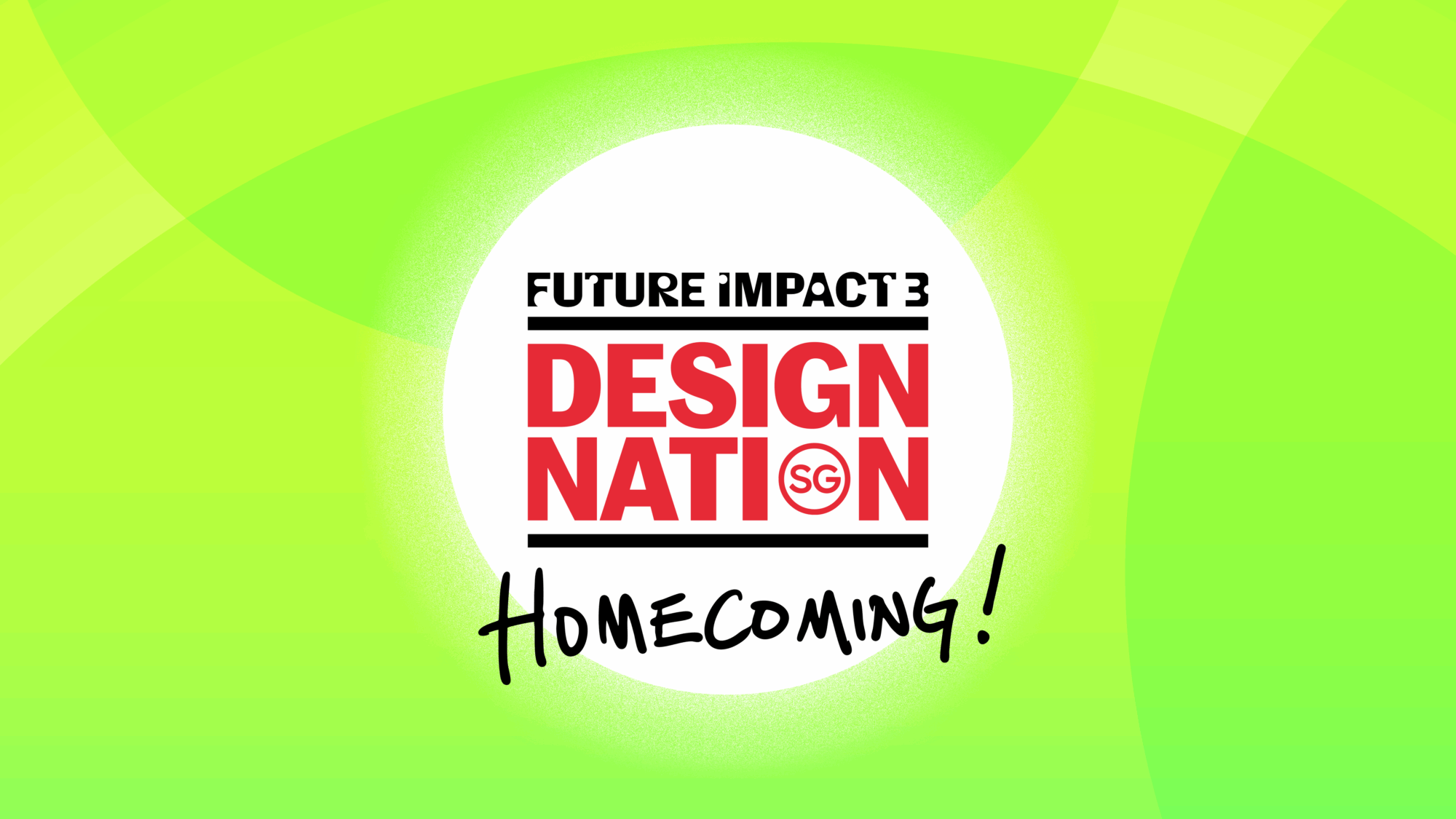Five Primary Students Prototype a Healthy Eating Tool and Nourish Their Creative Confidence Too
A group of primary school students from Ai Tong School discovered the potential of design thinking when they created a system to promote healthy eating. They were recognised nationally for their initiative to meaningfully promote positive habits. The bigger impact of their experience – the development of their creative confidence – will be felt in the years ahead to the benefit of Singapore at large.

Article by Narelle Yabuka.
In June 2024, news broke that when it comes to generating creative ideas, 15-year-old secondary school students in Singapore top their peers globally. The Organisation for Economic Co-operation and Development’s (OECD’s) Programme for International Student Assessment (PISA) 2022 test had involved 64 national education systems around the world.
Despite our nation’s strong performance, the PISA results also found that less than half of the tested Singapore students actually think of themselves as being creative. They fall below OECD averages in this regard. It’s a perplexing dichotomy.
After the news announcement, media discussions quickly began to dig into the mismatch. One possible driving factor, discussed in a radio interview, is a skewed perception of creativity as something that can only be practised by creative professionals. Another, raised by the Ministry of Education’s (MOE’s) Director-General of Education Liew Wei Li in a TV interview, is a shortage of methods for educators to assess inventive thinking.
To build students’ creative confidence, she suggested they need to be given more opportunities to execute their creative ideas. This was exactly the experience of a group of Primary 4 students from Ai Tong School. They were not only supported in their development of a clever concept called “GummyCare” to promote healthy eating among their peers, but were awarded for it in the inaugural National Design Project. Much to their excitement, the students even had the opportunity to present the project to the Minister for Education, Chan Chun Sing.
The impact of these experiences on the students’ creative confidence, not to mention their collaboration skills, empathy, and resilience, was immense. So how did it all come about, and can it be replicated?
Seeding Design Thinking in Schools
At Ai Tong School, as in many other Singapore schools, students experience an Applied Learning Programme (ALP) that guides them through real-life applications of creative and collaborative problem solving. “Students learn about innovation and invention in Primary 3, and they are introduced to design thinking in Primary 4,” explains Mrs Tan Qili, Head of Department for Innovation and Project Work at Ai Tong School.

Creativity is such an important part of school as it prepares students for a world we cannot envisage yet. When they are stuck with something they have never seen or experienced before, they can respond by knowing how to think instead of trying to remember.
— Mrs Tan Qili
As an extension of the ALP, selected Primary 4 students from Ai Tong are invited to join the Singapore Hokkien Huay Kuan (SHHK) Thinker’s Programme, where they deepen their understanding and application of design thinking.
Perfectly aligned in purpose, the National Design Project 2023 (an initiative of the DesignSingapore Council’s Design Education Advisory Committee and organised by Temasek Polytechnic’s School of Design) presented the opportunity to expose students to contexts beyond their familiar school environment through mentorship from design practitioners. Ai Tong School was one of 32 institutions that entered.
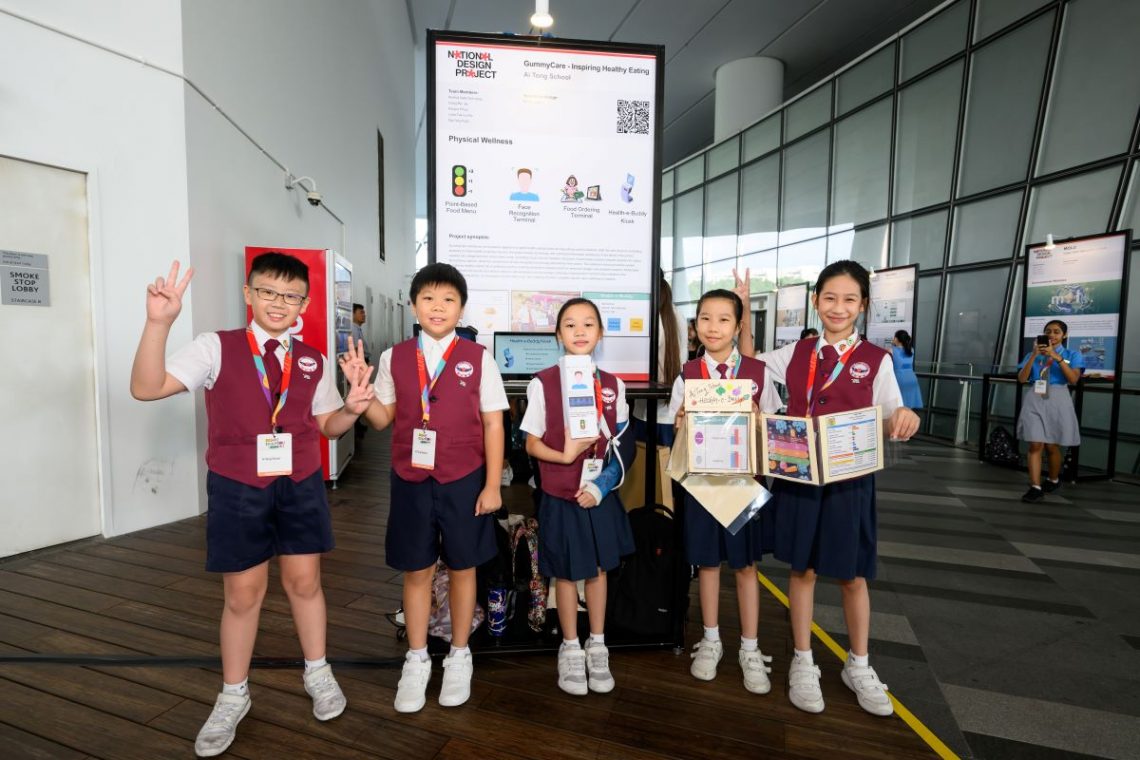
Collaborating to Create
Amelia Gaw Oon Leng, Gang Rui Jie, Karyne Phua, Luke Tian Le Ke, and Ng Ying Xuan participated in the National Design Project with colourful illustrations and a physical mock-up of their concept, titled “GummyCare – Inspiring Healthy Eating”. The team had spent over six months developing the idea for a digital food ordering system for the school canteen.
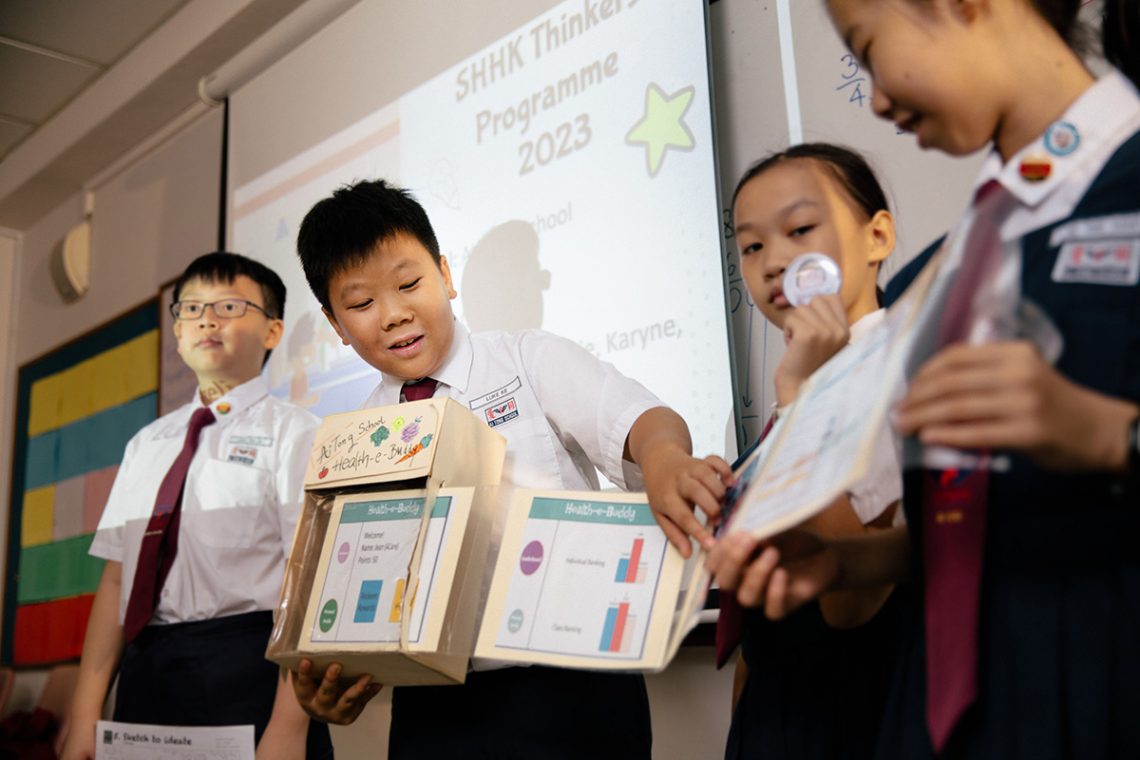
Team GummyCare decided to focus on healthy eating at school based on their observation of increasing rates of obesity and diet-related illnesses. Initially, the students planned to address the wellbeing of seniors, but National Design Project mentorship from Javieust Kua, Co-founder and Director of user experience design consultancy REASSEMBLE, helped the students to sharpen their focus. Explains Amelia, “He advised us to consider how well we knew the group of users.” So, the students turned their gaze to their peers.

I think one of the biggest problems in the world is unhealthy lifestyles. People tend to say they will try to eat more healthily, but in reality they don’t do it.
— Ng Ying Xuan
After surveying 137 of their fellow students, the team was able to ascertain awareness levels about healthy eating and understand current eating preferences. They also learned what would motivate students to choose healthier options at recess and lunch: not videos or posters, as they presumed, but rather prizes. GummyCare, therefore, rewards healthy food choices with points.
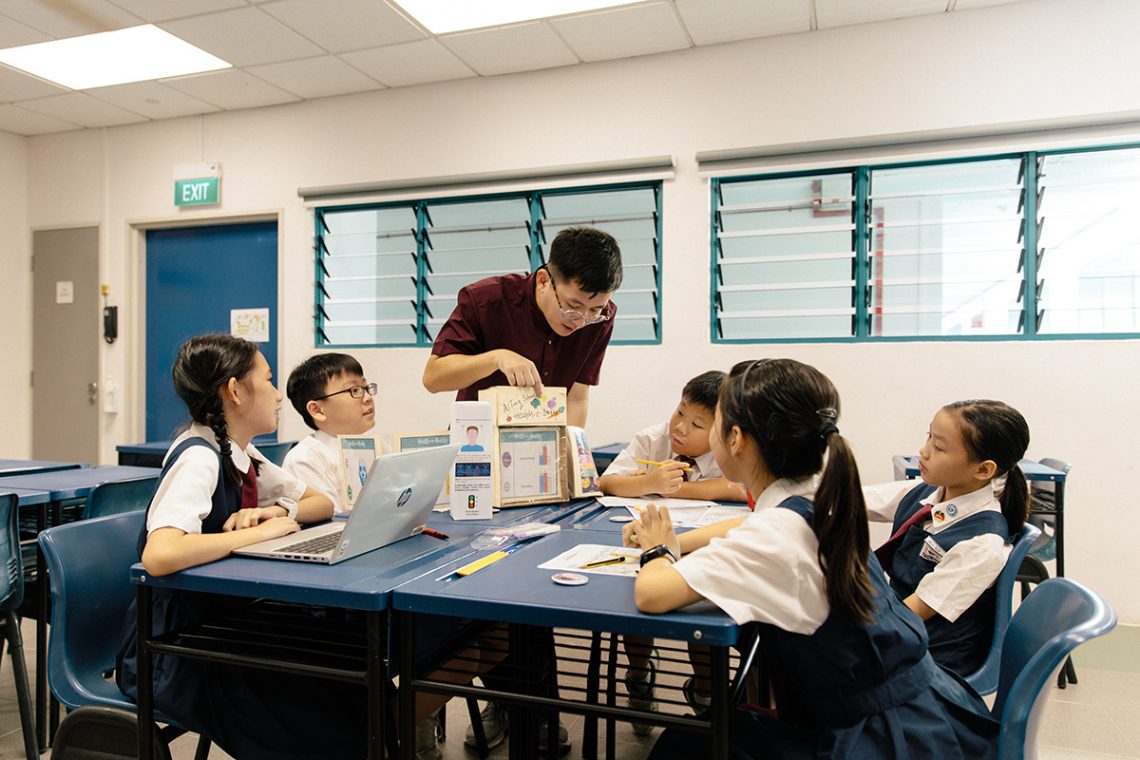
Brainstorming sessions to determine the nature of their solution embedded the students in a process of working creatively together and building the resilience to adapt. They discovered collaborative sketching as a tool for learning how to build on each other’s ideas.

There were disagreements on the path to the final solution, and unsettling moments when it became apparent that some ideas had to be abandoned in favour of others, but these moments helped the students build their resilience.

We were quite upset when we had to change our solution, but I understand that this is part and parcel of prototyping in design thinking. We cannot be stuck to one idea and refuse to change.
— Gang Rui Jie
Nurturing Health and Creative Confidence
So, what exactly did the five digital natives design in the end? GummyCare is a tech-based concept that uses face-recognition technology and tallies the points earned when a student chooses nutritious lunches and snacks. For easy understanding, canteen foods are colour coded according to their nutritional value and allocated points on a corresponding scale. These can be redeemed for badges and coupons for use at the school bookshop and canteen.
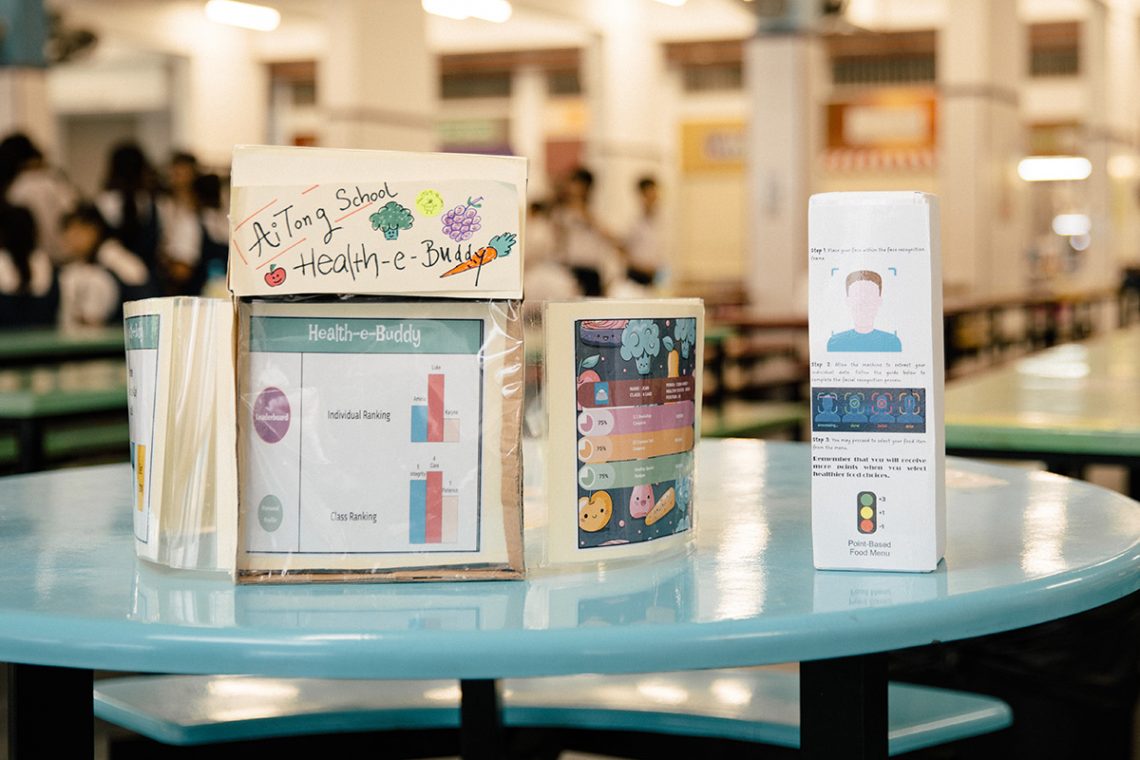
To further build awareness of health, GummyCare also incorporates a familiar form of technology – an interactive self-service terminal, which the team calls the Health-e-Buddy Kiosk. It allows students to access personalised diet reports and advice, targeting a conscious, self-determined attitude toward health. The whole system is a far cry from the idea for instructive videos and posters that the team began with – deemed “boring” by the surveyed students.
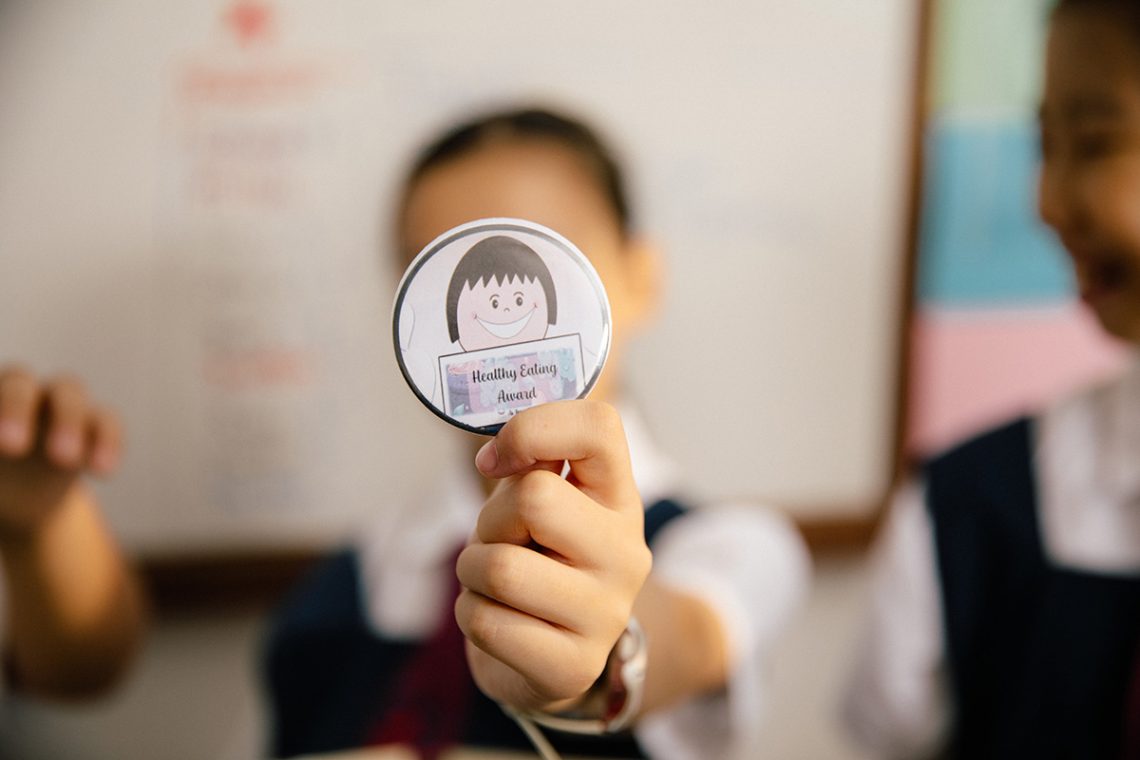
The students’ use of design thinking to develop a meaningful tool that can address a pervasive everyday problem earned GummyCare a distinction award in the National Design Project. As an award winner, they also gained the chance to present the project in a booth at the Design Education Summit 2023. These experiences beyond the classroom were pivotal for building confidence, as Luke describes:

I used to be very scared of doing presentations and interacting with others. Being in this programmme, I learnt to be brave. I really enjoy doing booth presentations as I can interact with the audience in a more relaxed manner.
— Luke Tian Le Ke
Even more notably, the effect on the students’ creative confidence was tangible, as they expressed after being asked: Do they see themselves as creative people now?
“Yes,” says Ying Xuan, “but I did not think that I was so creative in my ideas until I joined team GummyCare … I have learnt a lot from this experience!” Rui Jie shares, “I guess so, as there is sort of an affirmation of what I am capable of after getting a distinction award. I feel that I have gotten more creative compared to the past. I hope I can continue to grow this creative mindset.”
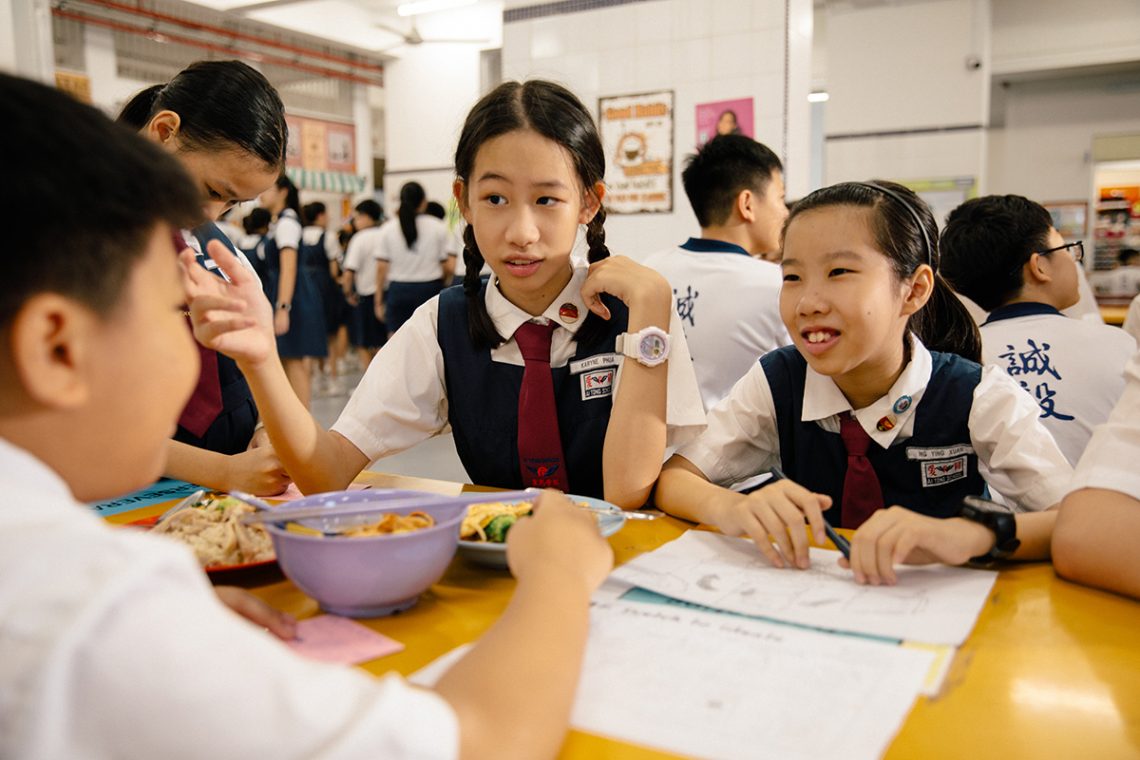
Luke always saw himself as very creative as he’s a keen story writer, but he says the experience in team GummyCare “took my creativity to the next level.” Karyne is already an ‘Aesthetic Leader’ at Ai Tong School – a role in which she participates in planning and organising school-wide events related to art and music. She says, “I think I am creative in many ways, perhaps more in the arts area … I’m so grateful that I had a chance to explore creativity in other areas such as design thinking.”

I guess now we are [creative] because we made a solution that people really like and deem as ‘creative’. I feel like before, it was not as strong of a feeling as compared to now.
— Amelia Gaw Oon Leng
Becoming Design Thinkers at Heart
Tan was delighted with how the students toned their collaborative muscles, developing the mindset and confidence to speak up and contribute. “What has surprised me most,” she recalls, “is their keenness to continue working collaboratively as a team to achieve common goals. They have experienced how a team can move forward and attain a certain level of success and they long to replicate such experiences in whatever platforms they are introduced to. I think it is a very critical outcome that determines the success of this programme.”
While there are currently no plans to implement the GummyCare system at the Ai Tong School canteen, the experience has influenced the students’ own diet choices.
What are they keen to design next? Amelia would like to find ways to improve accessibility to recycling bins. Ying Xuan wants to tackle phone addiction. Karyne wishes to design ways to alleviate stress.
These are all indications of a strong capacity to think critically about everyday problems, and a driving desire to use creative processes to solve them. Having developed this kind of confidence in their creative capacity, team GummyCare demonstrates how Singapore could steer its students toward a much better balance between creative thinking and creative confidence in the PISA scores in future.







